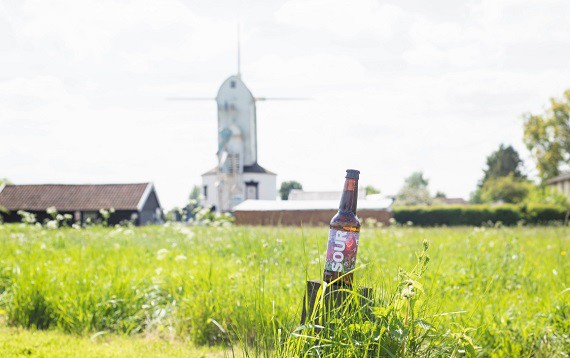But it is not simply the legacy of historic producers that spurs Brewdog and other breweries which are turning sour beer into the latest big thing. The thrusting craft brewing movement in the US has also driven things forward. Around the turn of the millennium, brewers in America recognised that drinkers’ palates had developed and that they wanted more than just the big, citrus hop notes on which the US craft brewing revolution had been founded. They understood the legacy of European sour beer brewers and headed in that direction. New Belgium in Colorado was at the forefront, helped by the fact that its brewmaster, Peter Bouckaert, had previously worked at Rodenbach. Cascade Brewing in Oregon also made this move, taking advantage of its proximity to the US wine industry to procure barrels for ageing. Since that time, other breweries have become sour beer specialists, including Jester King in Texas, which has developed a farm to provide fruits for its beers, and Wicked Weed in North Carolina. The fact that AB-Inbev, the world’s biggest brewing company, bought Wicked Weed in 2017 more than suggests that sour beer is on a profitable curve.
WINEMAKING SIMILARITIES
Now sour beer has spread all around the world, in some instances – as in the case of Cascade – building on the natural similarities with winemaking. This involves not only employing old wine casks but also sharing techniques, bearing in mind the use of wild yeasts, the ageing process and the concept of terroir. Sour beers also borrow from wine’s customer base. They call for a more mature palate than everyday quaffing beers and so attract wine connoisseurs who understand both subtlety and complexity and have an open mind about flavours. There are other growth areas, too. Sours also appeal to people who normally dislike beer because of its perceived bitterness and to those who welcome and understand acidity, such as cider drinkers.
The parallels with wine are particularly evident in Italy, where the sour beer market is remarkably mature, considering that until the mid-1990s the country had no small breweries. The 1,500 Italian breweries today know where their competition lies and keep a close eye on the wine market. To draw comparisons, they package beers in tall, shapely bottles and pitch their wares to the restaurant trade.
The concept of slow food developed in Italy, which points to a certain reverence for food and drink products that have been carefully crafted and need time to reach perfection. Again, sour beer fits the bill admirably. One of the most acclaimed Italian sours is Panil Barriquée from Birrificio Torrechiara near Parma. It is aged in cognac barrels and then becomes drier through another fermentation in the bottle. It has the elegance of a classic Flemish red combined with a delicate local accent from its suggestion of balsamic vinegar.
The UK is not, by tradition, a wine country, yet the reception given to sour beers, both classic and cutting edge, has been surprising. It is not unusual now to find supermarkets stocking classic Belgian brews such as Boon Geuze or Liefmans Kriek Brut alongside new generation sours from Thornbridge in the UK’s Peak District or Wild Beer in the west of England, a young business that is actually predicated on the idea of wild yeast fermentation and barrel ageing. Wild Beer even claims its own terroir, based on a yeast culture it has propagated from strains captured in a local cider orchard. Long-established British breweries have taken the plunge, too. Cornwall’s St Austell has produced a local version of kriek and Fuller’s has combined with the small Marble brewery to revive the naturally acidic Gale’s Prize Old Ale. At the Georgian Elgood’s brewery in Cambridgeshire, they’ve brought back into use two historic cooling vessels that had been lying dormant for years. These shallow copper tanks were never intentionally used to make sour beer, but now they do just that, fathering a small range of beers in the lambic style that – with a nod to their Belgian inspiration – are marketed under the name Coolship.




